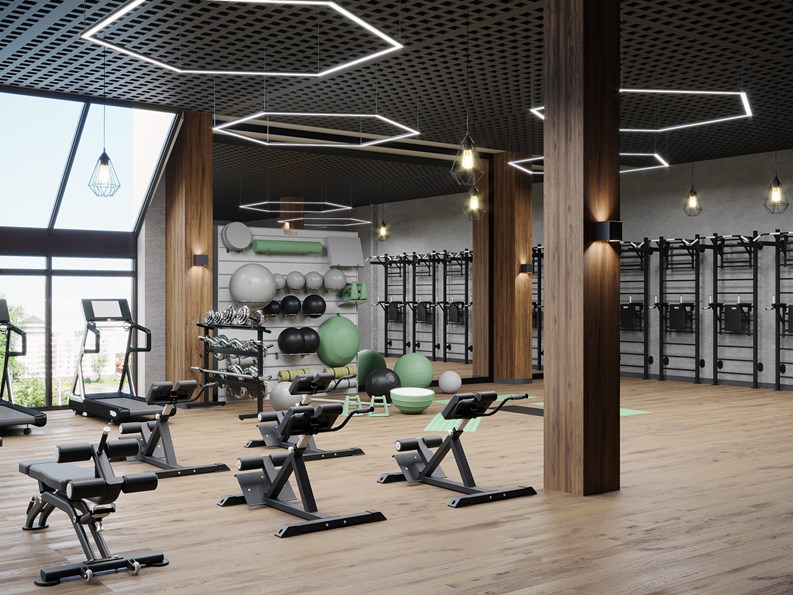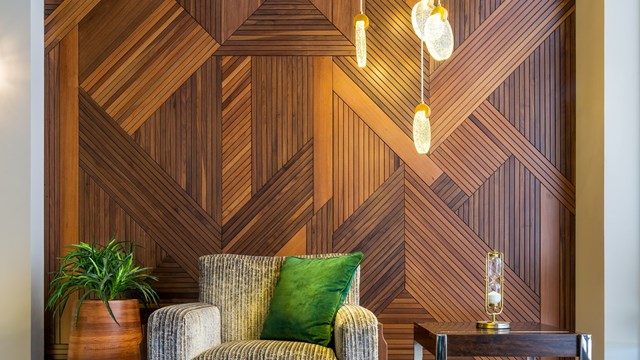Imagine your dream home. Maybe it’s a beautiful apartment in the sky, or a dramatic townhouse overlooking a lake or golf course. Maybe it includes a state-of-the-art gym or pool—or both—only steps or floors away. In the mood for a movie? What’s playing tonight at the in-house screening room? Need some quiet time? How about the library lounge? Want to surprise your significant other with a birthday party? The roof deck—and gourmet kitchen—is available this Saturday night. It all sounds pretty great—and says a lot about which amenities are favored by residents, owners, and shareholders alike.
What Makes a Great Amenity?
When it comes to the features and perks buildings and HOAs offer residents, greatness can be measured by many factors, including aesthetics, frequency of use, cost to install and maintain, and how much time and money it saves residents by providing a service they would otherwise have to pay for, just to name a few of the biggest factors. It can be all or any of these.
“There’s always this form-versus-function thing,” says Andy Marks, executive vice president of new business and client relationship management for Maxwell-Kates, Inc., a real estate management firm based in New York. Marks was also the president of his Upper East Side co-op for seven years. “Anything you do in terms of amenities must be aesthetically pleasing, and has to function well. And that’s from both sides of the table,” meaning that it must be cost-effective for both the users and the community in terms of return on funds invested. “Accessibility is also critically important today,” he adds. “A roof deck, for instance, must be accessible to all. You may need a lift for wheelchair users.”
Michelle Kithcart, vice president of lifestyle planning for FirstService Residential in New Jersey points out that “homeowner associations have a significant impact on the residential living experience by providing a wide range of amenities tailored to diverse lifestyles and preferences. As the desires of homeowners continue to evolve, certain amenities have seen a surge in demand, shaping the definition of a top-tier residential community. Understanding the amenities that attract residents can offer valuable insights for developers and HOAs in creating environments that cater to the modern homeowner’s needs. Amenities that foster a sense of community, wellness, and convenience are consistently gaining popularity. Features such as community gardens, fitness centers, and shared workspaces reflect a shift towards health-conscious, collaborative, and flexible living arrangements.”
Bruno Bartoli, an association manager with Evergreen Management in Nashua, New Hampshire, adds that “modernity, accessibility, cleanliness, and safety are critically important to residents accessing amenities.” Pools, clubhouses, gyms, tennis courts, and basketball courts are among the amenities offered by the communities he manages, and “inside the clubhouse, there are generally rental rooms with full kitchens, sometimes a sauna, a spa room, and a movie room.”
Amenities that allow residents to get out of their apartment without having to leave the community are popular all around, whether we are talking about urban high-rise buildings or suburban townhome communities. Doreen Wolf, a community association manager with Chicago-based real estate management company Community Specialists, observes that “residents like fitness centers, and for most people it makes sense. They can get their exercise without leaving the community. A small amenity like a library can also be very popular. Also, today many people are getting dogs and want a dog walk or dog play area. That amenity is becoming more and more popular.”
Community by Community
Often, the nature and character of a given community will determine which amenities are popular. An over-55 community will obviously have some different needs and wants than one with a large proportion of families with young children. The ‘card room’ so popular in retirement communities may be replaced with a children’s playroom, for instance.
“Demographics within HOAs are shifting,” says Kithcart, “leading to a diversified set of amenities. Older communities might prioritize accessibility features and low-impact fitness options, while those with younger families focus on playgrounds and educational resources. By adapting to these changing preferences, HOAs can ensure that their amenities continue to meet the evolving needs of their residents.”
Wolf notes that “things have shifted as people work from home post-pandemic. They may be seeking different amenity packages than they did before.”
Marks points out that “residents are looking for things that are not only jazzy, but that they will actually use.” Another question he raises is “whether an amenity is a revenue generator, or if it might increase costs for liability insurance.”
A prime example of the latter is a pool—especially an indoor pool, which requires not only additional insurance coverage, but full-time lifeguard attendants. Some communities with pools or other potentially risky facilities require users to sign waivers before using those amenities. Obviously nobody wants a mishap or a tragedy to take place on their property, either to a resident or a guest—and beyond the human cost of such an incident, no board wants to absorb the resulting legal and liability ramifications. Waivers are one way to offset the administrative risk, but the cost of qualified supervision and professional maintenance of the amenity may make it a financial non-starter for some communities.
The Unsung Hero of Amenities
A favorite of residents—and a potentially huge money-maker for the community—is storage, which is always in high demand in big and small communities alike. It’s particularly desirable in urban properties where closet space is at a premium to begin with. One 56-unit co-op in upper Manhattan reports that it leased out all of its 25 original units immediately upon completion of installation. They added another 20 units a few years later by eliminating an underused community space in the basement. That space had been used previously for everything from board meetings to kids’ parties. Those activities now take place in shareholders’ apartments.
Is a Gym Always a Good Choice?
Gyms, pools, fitness centers, and similar amenities are often the first that come to mind when discussing what amenities are best suited to a particular community. But are they really the best amenity for your community?
Bartoli reports that the most popular amenities at his properties are in fact sport-related facilities—everything from gyms to pools to tennis and basketball courts. Marks makes a different observation: In urban communities in particular, space constraints and personal tastes can render a gym that isn’t state of the art not worth the space devoted to it. In some neighborhoods in larger cities like New York, Chicago, and Boston, there are high-end gyms of all stripes every few blocks. Residents may prefer to get their exercise in a setting more tailored to their specific needs, even if they have to leave the building to get to it. So the appeal of an in-house gym may depend on such factors.
To maximize residents’ use of their amenities, Kithcart suggests that “HOAs should implement engagement strategies that include organized events and activities, activity scheduling, and gathering resident feedback to boost amenity utilization. Proper maintenance and management procedures are crucial for sustaining the use and appeal of amenities, ensuring that they remain accessible and functional for the community.”
Choosing New Amenities
Over time, as tastes and demographics shift and evolve, communities may choose to add or remove amenities. What’s the best way to go about that process?
“A board interested in adding or removing amenities needs to do four things,” says Bartoli. “First, do a survey. Ask the residents what they would like to see. Second, contact an engineering firm to make sure the amenity can be easily added or removed. Third, speak with an insurance agent to make sure the amenity doesn’t increase premiums, and that coverage is available and adequate. Last, speak with an attorney to make sure the proper vote is in place by the ownership and make sure governing documents are updated to reflect any necessary change.”
Marks recommends forming a volunteer committee and researching the project thoroughly. “Do a cost-benefit analysis of the proposed project,” he advises. “If you need architects and engineers, it can get expensive. Work with your property manager to source bids from architectural and engineering firms to evaluate the pros and cons of the project. After that, you’ll have an idea of what the cost will be, how you’re going to pay for it, and on what timeline. Work with your property manager as project manager to execute installation of the amenity. Most importantly, make sure you do it right!”
In the end, says Kithcart, “These sought-after amenities not only enhance property value, but also enrich the quality of life for residents.”
A J Sidransky is a staff writer/reporter with CooperatorNews and a published novelist. He may be reached at alan@yrinc.com.







Leave a Comment